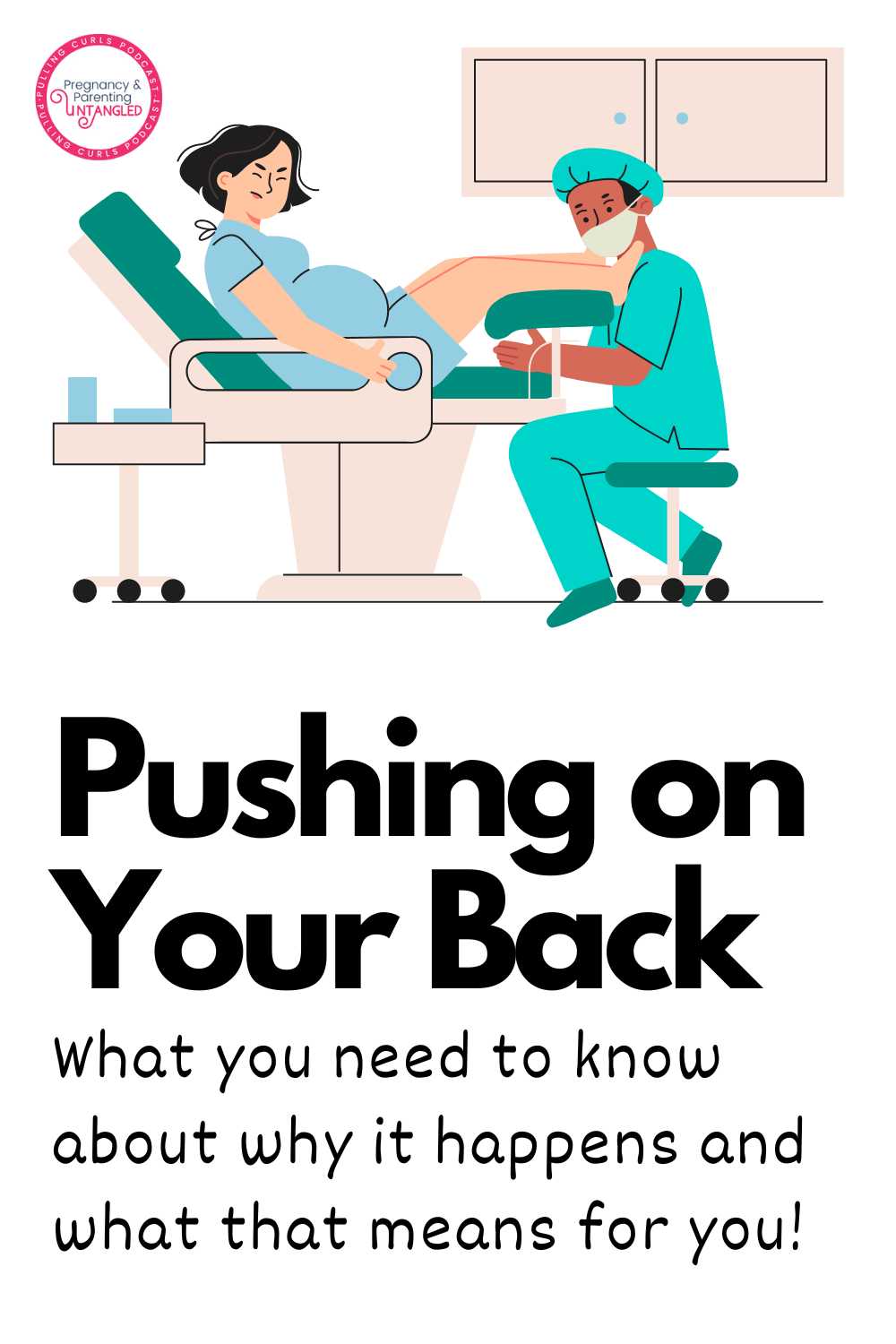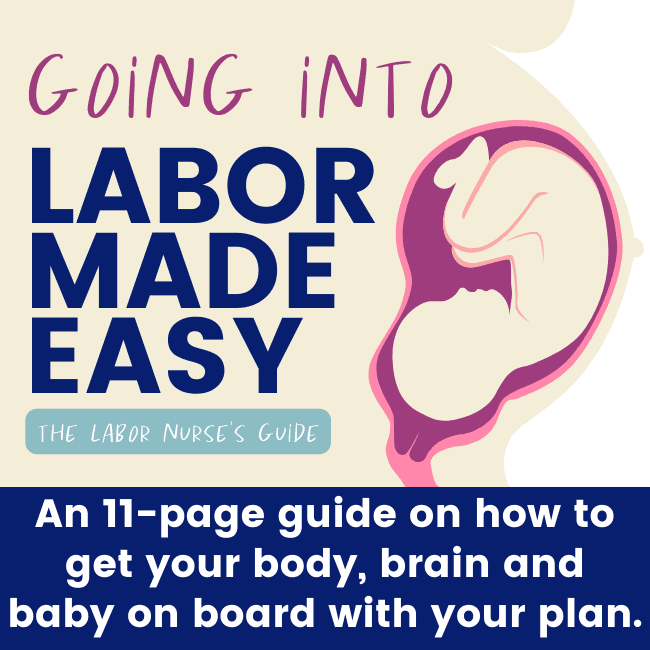In this episode, Hilary discusses the common concern of delivering on your back during childbirth. She advises listeners to talk to their provider about their preferences and highlights the potential reasons why delivering on your back is favored. Hilary also shares insights on alternative positions and the importance of pushing in a comfortable position. Stay tuned for valuable discussions on pregnancy and parenting.
Find it here on Apple or Spotify Podcasts
Big thanks to our sponsor The Online Prenatal Class for Couples — you need to learn about ALL of the things about birth — and it’s going to help you!
Links for you:
My post on pushing on your back: https://pregnurse.com/push-back/
Timestamps:
00:00 Physical therapists give conflicting advice to patients.
05:07 Consider different positions for comfortable labor delivery.
06:08 “Join us, review, share, subscribe for growth.”
Keypoints:
- Most providers usually deliver patients on their back, so it’s important to talk to your provider in advance if you’re considering delivering in another position.
- Providers are best at delivering babies when the mother is on her back, as they are used to supporting the perineum in that position.
- There are other considerations for delivering on your back, such as emergency situations like shoulder dystocia, which may require getting onto the bed and onto your back to deliver the baby.
- While it’s a great idea to take the pressure off the lower part of the perineum, there are other important considerations to keep in mind.
- If you want to deliver in a non-traditional position, it’s important to discuss it early on with your provider and ensure they are skilled in that position.
- It’s essential to communicate with your provider about delivering in other positions, and some providers may express concerns about potential tearing or complications.
- Some patients may try different positions during labor but end up feeling most comfortable and effective in delivering on their back.
- It’s crucial for the mother to push in the position where she feels the most comfortable during delivery, whether it’s on her back or otherwise.
- Engaging with the podcast on Instagram can provide an opportunity to share experiences and insights on delivering on your back and interacting with physical therapists or providers.
- Upcoming episodes will cover topics related to being pregnant after a loss and the importance of getting 4 hours of sleep.
Producer: Drew Erickson
Transcript
[00:00:00.000] – Hilary Erickson
Hey, guys. Welcome back to the Pulling Curls Podcast. Today on episode 226, we are talking about if you need to deliver on your back. So let’s untangle it.
[00:00:10.970] – Hilary Erickson
Hi, I’m Hilary, a serial overcomplicator. I’m also a nurse, mom to three, and the curly head behind Pulling Curls and the Pregnancy Nurse. This podcast aims to help us stop overcomplicating things and remember how much easier it is to keep things simple. Let’s smooth out those snarls with Pregnancy and Parenting Untangled, The Pulling Curls Podcast.
[00:00:39.230] – Hilary Erickson
Before we get started, this episode is sponsored by the Online Prenatal Class for Couples. If you are looking to get prepared for birth, and I mean all of birth because there’s a lot to talk about. Come join me in the Online Prenatal Class for Couples. It truly is the easy way to get prepared for your birth.
[00:00:54.970] – Hilary Erickson
Okay, delivering on your back is a huge deal on the interwebs anymore. I don’t know. I don’t see it in patient rooms very much. So it’s interesting that it’s such a big deal on social media. But I wanted to talk to you about delivering on your back and a few thoughts with it.
[00:01:10.420] – Hilary Erickson
So the first one is that you need to talk with your provider about this in advance. If it’s something that’s important to you, something you’re considering, something you’ve even thought over, talk to your provider about how they usually deliver patients. Fyi, most providers usually deliver patients on their back for a multitude of reasons.
[00:01:27.120] – Hilary Erickson
Honestly, in the United States, most people, depending on what hospital you’re at, deliver with an epidural, which means they’re on the bed, which means a lot of times they’re on their back.
[00:01:36.770] – Hilary Erickson
So talk with your provider about what they do just so they have a heads up if you’re thinking about delivering in another position, or so you can talk about the pros and cons with it.
[00:01:46.830] – Hilary Erickson
Something that I do not see talked about a lot on social media, especially by physical therapists, is that providers are best at delivering babies when you are on your back.
[00:01:58.470] – Hilary Erickson
I just think it’s so funny that physical therapists come into this saying which way you should push, because they don’t push with patients in the hospital. Sometimes there’s more to the story than just your musculature. But providers are just used to supporting a perineum best when you’re on your back.
[00:02:16.480] – Hilary Erickson
They say that the worst tears are when you’re on your back, and I completely disagree. The worst tears are when you are pushing without any support or guidance to help your perineam stretch. Baby comes out and it just explodes down there.
[00:02:29.460] – Hilary Erickson
So, while I think it’s a great idea to take the pressure off of the lowest part of your perineam, I agree with that. There are other considerations for as well. And one of the big ones is that if you have an emergency, like a shoulder dystocia, things like that, you then will need to get onto the bed and get onto your back in order to deliver the baby.
[00:02:52.230] – Hilary Erickson
I was listening to a TikTok somewhere of a labor nurse who was trying to squat to have her baby or stand or something like that. And she then had a dystocia. So the baby’s head comes out and then the shoulders get stuck. That’s what a dystocia is. And then she had to, with the baby hanging out of her, then get on the bed. Just doing that with the head hanging out of a patient, trying to get them on the bed without hurting the baby or the mom or anyone just seems very confusing.
[00:03:19.270] – Hilary Erickson
So when you’re talking with a provider about delivering in other positions, that’s why they start to get a little bit antsy. Now, there are lots of ways to deliver on your side or with the bottom of the bed down or using the squat bar in the bed so that if for some reason there’s an issue, you then just fall back onto your back and then you’re in a position very easily that the doctor can use their skills most effectively.
[00:03:47.610] – Hilary Erickson
I will say most doctors are not trained very well in delivering a baby while the patient is squatting because they just don’t do that in medical school.
[00:03:56.290] – Hilary Erickson
So if you want a provider that’s going to deliver your baby while you’re squatting, That’s something you’re going to want to talk to them about early on if they’re good at it. Because a lot of people are like, Well, my doctor should be good at everything. Right, wouldn’t it be amazing if we were all great at everything?
[00:04:11.110] – Hilary Erickson
But hopefully you have a provider who says, You know what? I’m just not great in that position. I’m worried you’re going to tear more. I’m worried if we have an issue because your baby looks to be a little bit big, that we’re not going to be able to get you on the bed. So I just want to tell you those things in advance so that that’s something that you can think about as well, because maybe you’re just thinking one side angle and you need that provider’s guidance to think about both sides of how we’re going to deliver the baby.
[00:04:35.580] – Hilary Erickson
That being said, a lot of times I had patients who were like, Oh, I want to do XYZ, different things, or sometimes they just were like, fine, pushing on their back. And I would rotate them into position We’d rotisserie chicken.
[00:04:47.080] – Hilary Erickson
We’d use the labor ball to push. We use all these different things. Usually, I would try every three to five pushes to change how they were pushing. Move them to the side. Use the birthing ball or use the peanut ball, things like that. And then after we’ve tried five different things, I go, which way did you feel the best in? And they’re like, I actually really like just delivering on my back. And I don’t know if that’s because that’s how movies have shown it. And so we’re just thinking that that’s how we’re going to deliver or if it’s something else.
[00:05:15.950] – Hilary Erickson
But anyway, just so you guys know, sometimes people just like delivering on their back. So I want to boil this down to, talk with your provider if you think that it’s something that you are going to be interested in, but also at the time of delivery, when pushing and you have all those new feelings, and if you have an epidural or not, push in the position that you feel the most comfortable in, because usually that’s the one that they push the best in, or it pushed just as well as the other ones, but they felt more comfortable in that position.
[00:05:43.830] – Hilary Erickson
Those are my thoughts on delivering on your back. I hope you guys found them helpful. If you guys have comments, come find us on Instagram. I’ll have a post about this or reel, and I’d love to hear what you guys think about delivering on your back, what you’ve learned from physical therapists or talking with your provider.
[00:05:59.270] – Hilary Erickson
Stay tuned, because next week we are talking with my friend Winter about being pregnant after a loss. And the week after that, we are talking about getting four hours of sleep and why it’s important. So stay tuned.
[00:06:07.840] – Hilary Erickson
Thanks for joining us on the Pulling Curls Podcast today. If you like today’s episode, please consider reviewing, sharing, subscribing. It really helps our podcast grow. Thank you.
Keywords:
delivering on your back, labor and delivery, childbirth positions, birthing positions, epidural, perineum support, shoulder dystocia, delivering on your side, squatting during labor, provider guidance, patient comfort, birthing ball, peanut ball, comfortable pushing position, labor and delivery complications, pushing techniques, physical therapists, postpartum recovery, pregnancy after loss, sleep deprivation, maternal healthcare, medical interventions, childbirth education, prenatal preparation, online prenatal class, nurse advice, maternal well-being, patient advocacy, maternal comfort, provider-patient communication










Leave a Reply